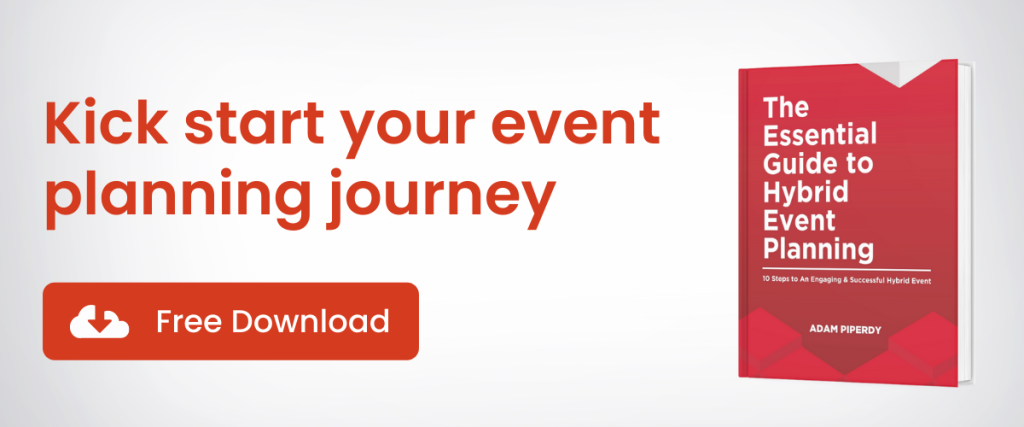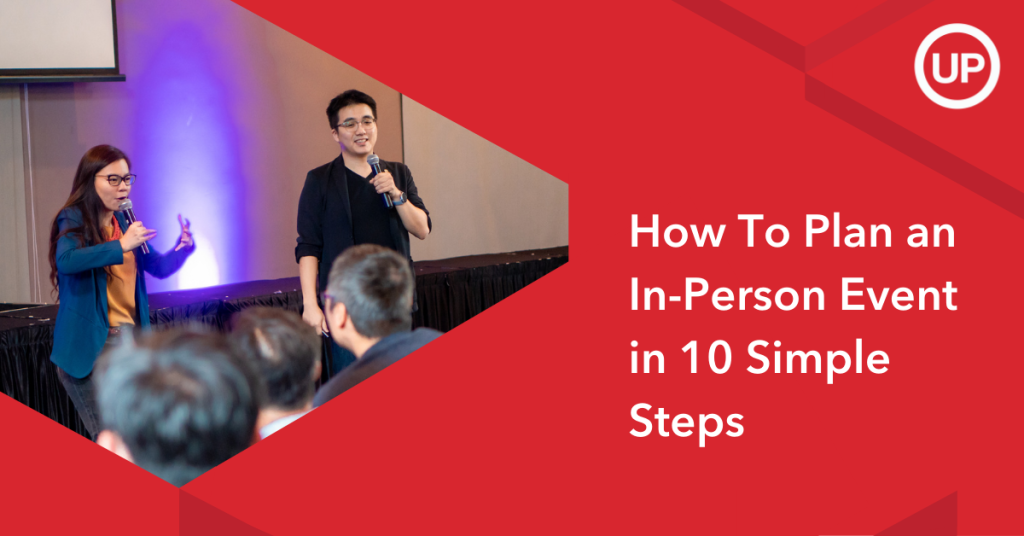
Expanded group sizes for social gatherings and optional mask-wearing in outdoor areas were among the slew of relaxed Covid-19 measures that kicked in on 29 March. But if you’re an event organiser, these aren’t even the most exciting changes!
You no longer need to apply to hold a MICE event (e.g. award ceremony, town hall meetings and conferences). In fact, according to STB’s guidance, the number of allowed in-person attendees has been raised to 1,000 or 75% of your venue’s capacity, whichever is higher.
As we pivot back to in-person events, don’t forget to check out our guide to planning an in-person event. Here, you’ll find all the essential steps for an engaging and successful in-person event.
1. Develop your event goals and KPIs
What do you hope to achieve with your event? Although it’s a decidedly simple question, your answer is crucial to nailing down other aspects of your event such as its budget, sponsorship opportunities and marketing strategy. More importantly, defining your event’s purpose enables you to more accurately measure its effectiveness.
For example, you would hold an award ceremony to celebrate the achievements of your team members and boost their morale. The expected outcome? A 60% uplift in job satisfaction ratings among team members in the next 6 months. In developing your event goals and KPIs, be sure to be as specific as possible.
2. Assemble your event committee
It’s no surprise that bringing your event to life will require a vast array of skill sets from different team members, including an event manager, a creative strategist, a marketer, a venue manager, an emcee, an AV crew, a floor manager and an event moderator.
Depending on the scope of your event, you may want to enlist extra help with the roles required to pull off a successful event.
3. Establish your event budget

An attendee collects her door gift before heading inside Hybrid Experience @ Suntec Singapore for the Lazada Birthday Conference 2022
You may have a plan for the most show-stopping event, but it can quickly fall apart if you don’t have the budget to pursue it. The venue, set and props, emcee, speakers, event merchandise, door gifts, catering and marketing-related expenses all contribute to the costs commonly associated with holding an in-person event.
To start, make a list of items that you’ll need for your event and estimate the maximum amount you’re willing to spend on each item. A good rule of thumb is to allocate a budget surplus of 5-10% of your total amount to account for hidden costs or surprises.
4. Secure your sponsors
Sponsors can help to defray the cost of running your in-person event and even generate revenue. But before approaching sponsors, think about the type of support you want and how that support can benefit them. In exchange for speaking at your conference, for example, a sponsor is able to boost brand awareness.
You may also want to ask more questions to determine whether a sponsor is suitable. Does your sponsor share the same core values as you? How much control over branding and content are you open to giving your sponsor?
5. Choose your emcee
An emcee should definitely be at the top of your list if you’re looking to deliver an unforgettable event experience. Besides helping to create seamless transitions between the different segments of your event, an emcee is able to keep your audience engaged throughout the programme.
To achieve this, your emcee needs to be able to connect with your audience. That’s why it’s important to ensure that your emcee is able to buy into your topic. Additionally, we recommend setting up a pre-event meeting for your emcee to learn more about your audience and the cues your audience responds to.
6. Design your programme
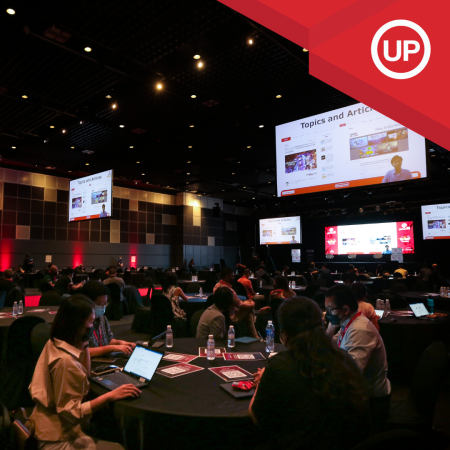
Held at Hybrid Experience @ Suntec Singapore in October 2021, gamescom asia 2021 featured more than 40 sessions over 4 days
Your programme or content is the most important aspect of your event. You could even argue that your programme is your event. When designing a thoughtful and compelling programme, be sure to consider the length of your event. While you can easily fit an award ceremony or a town hall meeting into 2 hours, a conference will likely take much longer.
A conference that features one or more sessions happening simultaneously (known as a multi-track programme) is a great way to create tailored learning experiences for different niches. Live performances are now also allowed at in-person events, giving you more options to make your in-person event feel more dynamic and fun.
7. Book your venue
A venue with the right infrastructure is the foundation for every successful in-person event. We operate Hybrid Experience @ Suntec Singapore, a dedicated MICE event studio that’s equipped with a 8m-wide cinematic LED backdrop and a flexible stage lighting set-up. It’s the perfect way to showcase your in-person event.
Don’t forget to check if your venue charges a rehearsal fee. A rehearsal gives you the opportunity to work with your emcee and your speakers on pacing while ironing out any technical issue.
8. Market your event
Your event lives and dies by its audience. Without an audience, it’d be impossible to measure its success! For internal or company-wide events, getting an audience won’t be an issue as they will be attended mainly by your team members. But attracting an external audience will prove more tricky.
Right away, you want to create a landing page to sell your event tickets. Consider early-bird offers and different price tiers. Be sure to include other pertinent information such as speaker profiles, event agenda and directions to your event venue. You may also want to rope in your sponsors to help with promoting your event or reserve a budget for social media ads.
9. Remind everyone of your event
In the days leading up to your event, don’t forget to take the time to check in with everyone. We typically send reminder emails up to a week before the event, then another email just a day before. And we’re not just talking about your registrants – confirm timings with your caterer and ask your speakers if they have any special request.
These pre-event conversations are invaluable and will help free up time for you to concentrate on executing your event instead of answering last-minute queries or solving potential troubles with navigating to your event venue.
10. Prepare your analytics
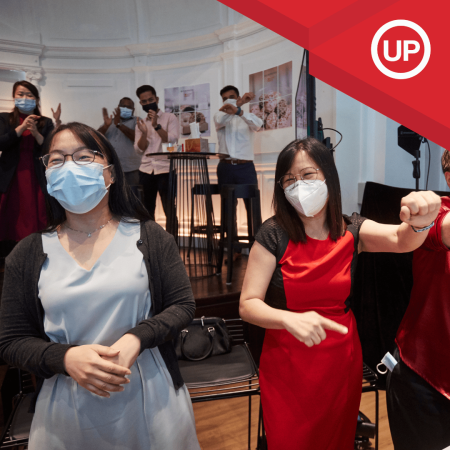
To be able to measure the success of your event, you need to be deliberate in collecting data both before and during the event. Ideally, your event registration form should already capture the job title and organisation of your attendees. You also want to calculate the turn-up rate of your event, in addition to engagement numbers such as the number of attendees in each session and the average duration of participation in each session.
These data sets will give you a holistic view of the performance of your event and guide the improvements that you can make to your next in-person event.
The importance of planning for your in-person event
Planning for an in-person event is no small feat, even for the largest teams! From designing a compelling programme to looking for an emcee who understands your vision to securing a venue that’s able to support your event requirements, there’s a lot to consider and plan for. That’s why we encourage you to plan for your event at least 3 months in advance.
Download our full event planning guide to kick start your planning journey.
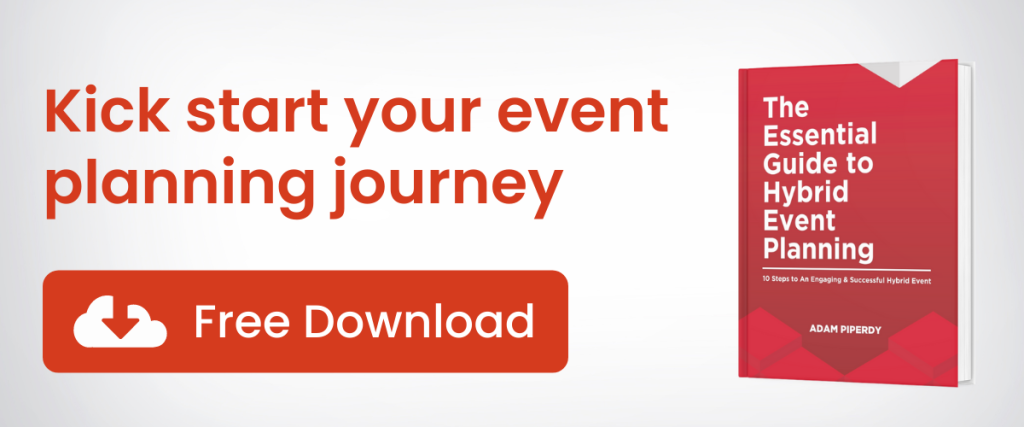
Our Experience Managers are on hand to help you take the fuss out of organising and running your award ceremony, town hall or internal meeting and conference.
Create your next in-person, hybrid or virtual event experience with us today! Book a complimentary consultation or contact us at +65 8201 4088 (WhatsApp) or at +65 6242 8032 (Call).
Our studios:

